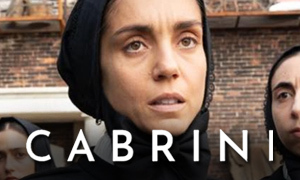Blonde: History vs. Hollywood
Ana de Armas
Born: April 30, 1988
Birthplace:
Havana, Cuba
Marilyn Monroe
Born: June 1, 1926
Birthplace: Los Angeles, California, USA
Death: August 4, 1962, Los Angeles, California, USA (barbiturate overdose)
Bobby Cannavale
Born: May 3, 1970
Birthplace:
Union City, New Jersey, USA
Joe DiMaggio
Born: November 25, 1914
Birthplace: Martinez, California, USA
Death: March 8, 1999, Hollywood, Florida, USA (lung cancer)
Renamed 'The Ex-Athlete' in the Movie
Adrien Brody
Born: April 14, 1973
Birthplace:
Queens, New York City, New York, USA
Arthur Miller
Born: October 17, 1915
Birthplace: New York City, New York, USA
Death: February 10, 2005, Roxbury, Connecticut, USA (bladder cancer and heart failure)
Renamed 'The Playwright' in the Movie
Was Marilyn Monroe's father absent from her life?
Yes. Born Norma Jeane Mortenson on June 1, 1926, Monroe did not know her father. In 2022, DNA testing revealed that her father was Charles Stanley Gifford, a co-worker of her mother's at Consolidated Film Industries, where her mother, Gladys, worked as a film negative cutter (Variety). The Blonde true story confirms that Monroe spent years searching for her father and trying to connect with him, often finding substitute fathers in the men she became involved with. In the movie, she even calls some of these men "daddy."
On her birth certificate, Gladys indicated that Monroe's father was Martin Edward Mortensen, Gladys's husband with whom she was separated at the time and would divorce in 1928 (Gladys misspelled his name "Mortenson" on the birth certificate). However, it was unlikely that Mortensen was the father since their separation happened well before she became pregnant. The revelation that Charles Stanley Gifford was Marilyn Monroe's father makes more sense.
Did Marilyn Monroe's mother try to drown her in a bathtub?
No. In the Netflix movie, Norma Jeane's unloving and mentally ill mother, Gladys (Julianne Nicholson), tries to drown her in a bathtub. Our Blonde fact-check revealed no evidence that this moment actually happened in real life.
Was Marilyn Monroe an orphan?
Yes. Her mother, Gladys Pearl Baker (née Monroe), was financially and mentally unprepared for a child when Marilyn was born. She placed Marilyn, whose birth name was Norma Jeane Mortenson, with foster parents for several years. Marilyn moved back in with her mother after Gladys bought a small house in Hollywood. Their time under the same roof only lasted a matter of months. Gladys suffered a mental breakdown in January 1934 and was diagnosed with paranoid schizophrenia. She stayed in a rest home for several months before being committed to the Metropolitan State Hospital. After this, Marilyn had little contact with her. Gladys was in and out of hospitals for the remainder of her life.
In researching how accurate is Blonde, we learned that Marilyn (then known as Norma Jeane) became a ward of the state and her living situation indeed became unstable. She moved around homes and was placed in the Los Angeles Orphans Home in September 1935. Her mother's friend, Grace Goddard, became her legal guardian and took her out of the orphanage in the summer of 1937. However, Marilyn's stay with the Goddards only lasted a matter of months because Grace's husband, Erwin "Doc" Goddard, molested her. She then stayed with Grace's relatives and friends, eventually finding a more permanent home with Grace's elderly Aunt Ana. When Ana's health began to fail, Marilyn went back to live with the Goddards until Doc's job relocated him to West Virginia.
California's child protection laws prevented her from leaving the state, and instead of returning to the orphanage, a 16-year-old Marilyn married James Dougherty, the neighbor's 21-year-old son who was a factory worker. Their mismatched union ended in divorce in 1946 in part due to the fact that Dougherty wanted her to be a housewife and not pursue an acting career.
Where did Norma Jeane's stage name "Marilyn Monroe" come from?
After Norma Jeane Mortenson signed a contract with 20th Century Fox in 1946, she and Fox executive Ben Lyon came up with the stage name "Marilyn Monroe". Lyon chose the first name "Marilyn" after thinking of Broadway star Marilyn Miller. The last name "Monroe" was Norma Jeane's mother's maiden name.
Was Marilyn Monroe raped by studio chief Darryl F. Zanuck?
In the movie, Monroe (Ana de Armas) lands her first screen role in All About Eve, a part that she secures by submitting to rape in the office of "Mr. Z" (David Warshofsky), a reference to Darryl F. Zanuck, the founder and head of 20th Century Fox. It's true that Darryl F. Zanuck was known to be the Harvey Weinstein of his time. However, the real-life Monroe never mentioned Zanuck when recalling "casting couch" sex encounters. In an article for The Guardian, Monroe biographer Anthony Summers said that in interviews with nearly 700 people, he encountered nothing to lead him to believe Zanuck had raped Marilyn Monroe.
Did Marilyn Monroe have a threesome with Edward G. Robinson Jr. and Charlie Chaplin Jr.?
That's what the Netflix movie depicts. Not only do her exploits with the two men land her on tabloid covers, she also ends up pregnant. According to the Blonde true story, Marilyn did date Charlie Chaplin Jr. Their brief affair ended when he found her with his brother. The movie changes this to Marilyn finding Chaplin Jr. and Edward G. Robinson Jr. in bed together. Yet, neither Charles Chaplin Jr. nor Edward G. Robinson Jr. was known to be gay. Portraying the two Hollywood playboys as pseudo porn stars who behave like incestuous siblings is a ridiculous deviation from reality. While all three of them did know each other, we found no evidence that Marilyn had a threesome with the two men.
Did a studio force Marilyn Monroe to have an abortion?
In answering the question, "Is Blonde accurate?" we discovered that while Marilyn Monroe reportedly had multiple abortions, there's no proof that the studio forced her to undergo any of them. Having said that, it is well known that studios did pressure pregnant starlets into having abortions. It is unknown if this is what happened in Marilyn's case. The movie combines her multiple abortions into one (though it implies another after an episode with JFK), which is depicted in a grotesque scene that will surely cause some viewers to abandon the film altogether.
Marilyn (Ana de Armas) becomes pregnant after a threesome with Cass (Xavier Samuels) and Eddie (Evan Williams), who are meant to represent Charlie Chaplin Jr. and Edward G. Robinson Jr. Realizing it will affect their bottom line, the studio arranges for her to have an abortion. Director and writer Andrew Dominik opts to show a close-up of the abortion by entering Marilyn's cervix, a decision that takes an already disturbing movie to a nightmarish and unnecessary level.
Did Joe DiMaggio physically abuse Marilyn Monroe?
Yes. Joe DiMaggio's marriage to Marilyn Monroe is fairly well documented in real life, including the fact that he was both verbally and physically abusive. A Blonde fact-check confirms their relationship started out with the retired baseball star being a chivalrous gentleman who placed Marilyn on a pedestal. She soon fell from that pedestal as he became jealous of all the other men who liked to gawk at Marilyn too. DiMaggio was also jealous that he was no longer the center of attention when they walked into a room.
It's true that he became outraged over thousands of onlookers drooling over his wife during the filming of The Seven Year Itch scene where her white dress is blown up by the wind coming through the subway grate (the movie was shot in Hollywood but the studio filmed the subway grate scene on Lexington Avenue in Manhattan as a publicity stunt). For a jealous and controlling husband, the shoot was too much for DiMaggio to handle and he reportedly beat her up in their hotel room (Daily Mail). Marilyn filed for divorce the following month in October 1954 after only nine months of marriage.
Does Cuban actress Ana de Armas get Marilyn Monroe's voice right?
Not exactly. The lack of authenticity when it comes to Marilyn's voice in the Netflix film is something that was pointed out as soon as the teaser trailer was released. While de Armas captures Marilyn's half-breathless style of speaking, traces of the actress's Cuban accent come through at times. However, given so many other things are exaggerated or fictionalized in the film, the accent is believable enough that it doesn't stand out as a significant issue.
Did Arthur Miller put Marilyn's words in his plays without telling her?
Yes. While Arthur Miller was indeed kind to Marilyn on the surface, the Blonde true story reveals that he did lie to her about using her in his writing. Like in the Netflix movie, she also became pregnant while married to Miller but the pregnancy ended in a miscarriage in 1956. The movie's depiction of the miscarriage being the result of Marilyn tripping on a rock on the beach is most likely fiction. In real life, she also had an ectopic pregnancy in mid-1957 while married to Miller and miscarried a second time. Their marriage ended in divorce in 1961 after Miller was already in a relationship with his third wife, set photographer Inge Morath.
Is Marilyn's relationship with JFK depicted accurately?
No. Just in case you started to think that the movie might be entering the territory of a biopic, the JFK scene arrives to quash that notion. Marilyn is delivered to JFK's hotel room by two Secret Service agents who at one point actually lift her off the ground and present her (in her terms, like "a piece of meat") to JFK. The President then makes her perform fellatio on him as he watches coverage of the Friendship 7 rocket launch on TV and listens to J. Edgar Hoover on the phone ironically scold him over allegations of sexual impropriety. He then throws Marilyn onto a bed and rapes her. She wakes up in bed bruised and battered and is carried out again, traumatized by what just unfolded.
In answering the question, "How accurate is Blonde?" we discovered that not only is there no evidence that JFK ever sexually assaulted Marilyn Monroe, the scene reduces their more complex real-life relationship to one where he essentially orders her up as an object to abuse. In reality, Marilyn Monroe and JFK had a companionship and were sexually involved as far back as the early 1950s (Variety). The movie's skewed and ridiculous take on their relationship is so far from reality that it should have been left on the cutting room floor.
Joyce Carol Oates' novel on which the film is based goes as far as to depict Marilyn being assassinated at the order of the Kennedys, despite there being zero evidence that JFK, his brother Robert F. Kennedy, or anyone else murdered her. Oates defended her novel's fabrications by saying she "had no particular obligation" to the facts, despite referencing real people in her novel with real reputations and historical legacies (The Guardian).
Why is Blonde rated NC-17?
Take your pick. The close-up of Marilyn (Ana de Armas) reluctantly performing oral sex on JFK for a minute is the quasi-pornographic scene most likely responsible for the NC-17 rating. The film going into Marilyn's cervix during an abortion is equally, if not more so, graphic and disturbing. In theory, an NC-17 rating means that anyone 17 or under is prohibited from viewing the film. However, this is a Netflix film and was only given a limited theatrical release, so it will mostly be up to parents to enforce (or not enforce) that guideline.
Was Marilyn Monroe addicted to drugs?
Yes. It is well known that for several years into the early 1960s, Marilyn Monroe became addicted to prescription drugs, including barbiturates and amphetamines. She also abused alcohol. While conducting our Blonde fact-check, we learned that during the filming of John Huston's The Misfits in 1960, the shoot had to be halted in order for Monroe to spend a week detoxing in a hospital. She died of a barbiturate overdose on August 4, 1962. Given the amount of drugs in her body, an accidental overdose was ruled out and the coroner determined her death to be a probable suicide.
Is Blonde historically accurate?
Blonde is a heavily fictionalized interpretation of Marilyn Monroe's life that is based on Joyce Carol Oates' 2000 novel, which fuses fact and fiction, taking numerous liberties with the truth. In the book's preface, Oates herself said that her novel was a "radically distilled 'life' of Marilyn Monroe," explaining that while she used real-life facts and people, she freely imagined a lot of the rest. From that imagining, we get director Andrew Dominik's Netflix film, which he described as "an emotional nightmare fairytale."
Despite being billed as one, the film is clearly not a biopic, at least not in the traditional sense. It is so fragmented that it would be difficult to come up with a biographical timeline of Marilyn's life from the film. At its heart is Marilyn's search for a nonexistent father and all of the substitutes she finds in the form of men along the way. She is objectified and devoured by Hollywood and the men that run it. The movie in many ways is a #MeToo-era look at Marilyn's life seen through (and distorted by) a feminist lens that offers an imagined and exaggerated interpretation of the icon.
While true story movies are often criticized for being by-the-numbers recaps of their subjects' Wikipedia pages, the same can't be said about Blonde. However, writer/director Andrew Dominik deviates so far from the facts in an attempt to create a visual representation of Marilyn's inner turmoil that viewers will often only be able to guess where the truth ends and the spectacle that is Blonde begins. By the end, the scenes that hue closer to reality, including her wrought marriage to Joe DiMaggio (Bobby Cannavale), is when Blonde is at its best. Other moments seem to be created more for shock value than to provide a genuine window into Marilyn.
"There's something in it to offend everyone," said director Dominik (The Guardian). There in lies the problem. Much like in Joyce Carol Oates' novel, the truth is discarded in favor of tawdry, fabricated, attention-grabbing moments that do more to cheapen Marilyn's legacy than give us a better understanding of the complex woman she was. "Watched by all, seen by none," is an ironic tagline for a movie that's so chock-full of historical inaccuracies that it does little to help us see the real Marilyn Monroe.







